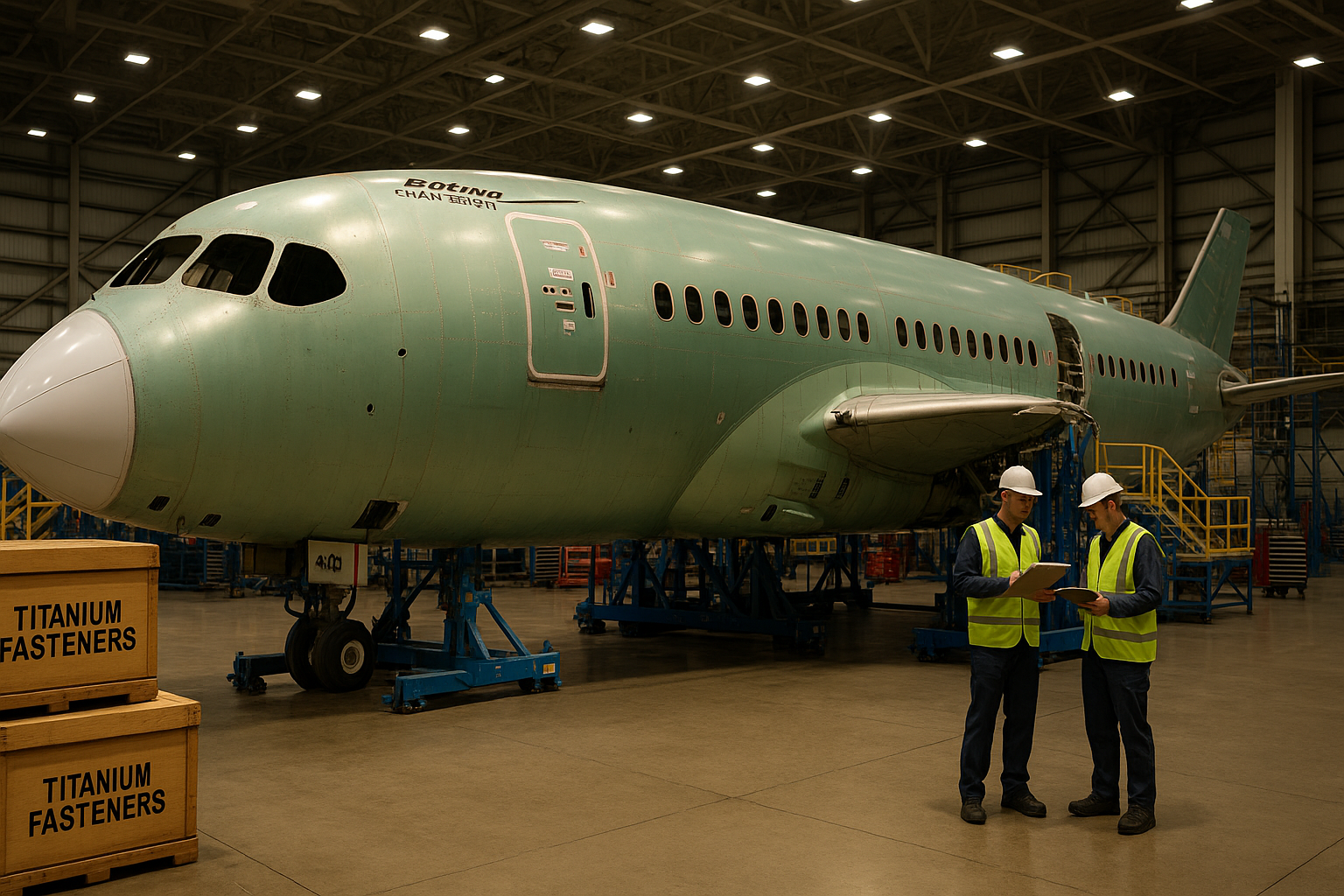Boeing's 787 Dreamliner program hit another speed bump yesterday when the company announced it would further slow production rates due to ongoing supply chain issues. It's the latest chapter in what's been a roller coaster journey for the revolutionary carbon-fiber aircraft.
I flew on a Dreamliner last month from Chicago to London, and despite all Boeing's troubles, the passenger experience remains impressive. Those larger windows, better cabin pressure, and higher humidity levels really do make a difference on long-haul flights. It's a reminder of why airlines and passengers still love this plane despite its troubled history.
The latest production challenges stem primarily from titanium fastener shortages - seemingly small components that have outsized impacts on assembly lines. Boeing's Charleston, South Carolina facility will now produce approximately three Dreamliners monthly for the remainder of 2025, down from the five per month target announced earlier this year.
"We're making the tough but necessary decision to adjust production rates to ensure quality remains our top priority," said Boeing Commercial Airplanes CEO Stephanie Pope in yesterday's announcement. "We're working closely with our suppliers to address these challenges."
This setback comes at a particularly difficult time for Boeing. The company is still working to restore its reputation following the 737 MAX crisis, and new CEO Kelly Ortberg (who took over just three months ago) has promised investors a back-to-basics approach focused on engineering excellence and manufacturing discipline.
For airlines, these delays create real operational headaches. United Airlines CEO Scott Kirby expressed frustration during their earnings call last week: "We've built our international growth strategy around Dreamliner deliveries. These continued delays force us to extend the life of older, less efficient aircraft."
The irony isn't lost on industry observers - the 787 was designed to be Boeing's most reliable, efficient widebody, but production issues have repeatedly undermined these advantages. Quality control problems discovered in 2020-2021 led to a delivery halt that lasted nearly two years, and the program has struggled to regain momentum since.
Despite these challenges, the Dreamliner's fundamentals remain strong. The plane's 20% fuel efficiency improvement over previous-generation aircraft is even more valuable now with higher jet fuel prices. And its range capabilities open up routes that weren't previously viable with older aircraft.
Boeing currently has about 480 unfilled Dreamliner orders - representing over $135 billion at list prices (though airlines typically receive substantial discounts). Major customers include American Airlines, Japan Airlines, and Emirates, which placed a significant order at last year's Dubai Airshow.
From an investment perspective, Boeing shares dropped 3.8% on yesterday's news. The stock is now down about 22% year-to-date, significantly underperforming the broader market and rival Airbus.
I think the Dreamliner will ultimately be remembered as a transformative aircraft despite its troubled development. But Boeing's execution challenges raise legitimate questions about the company's ability to deliver on its next major program - especially as they begin preliminary work on a new midsize airplane expected in the 2030s.
